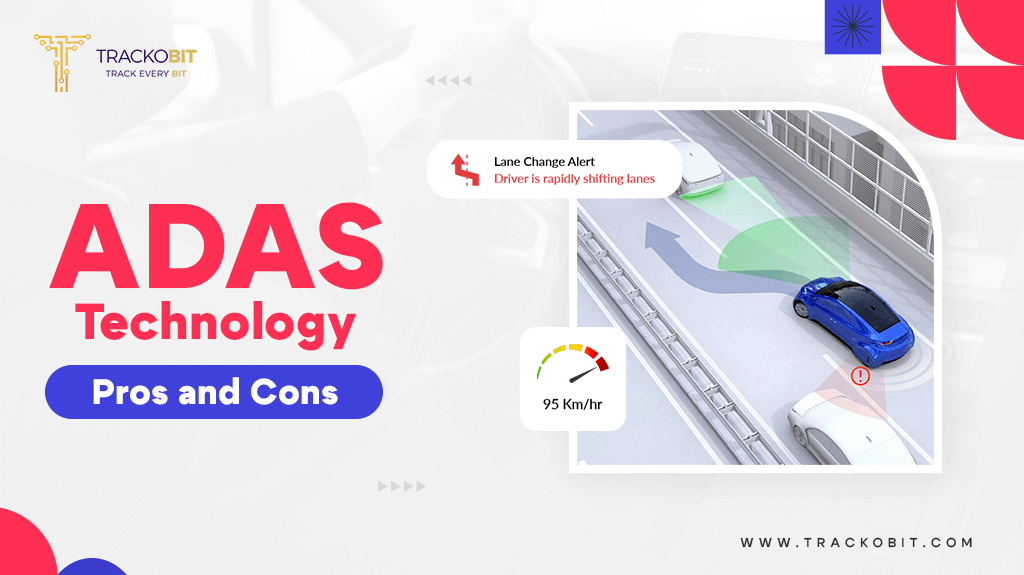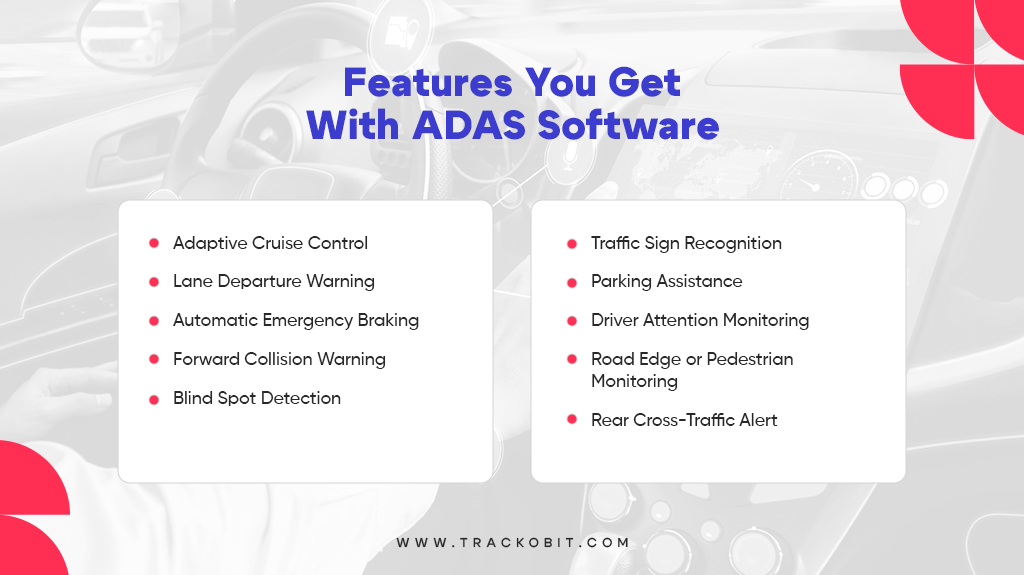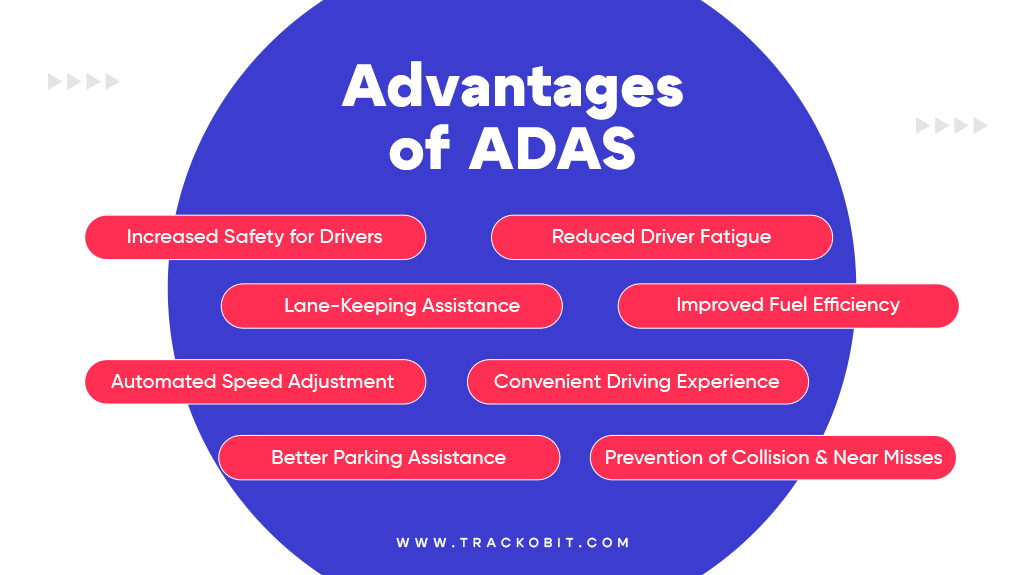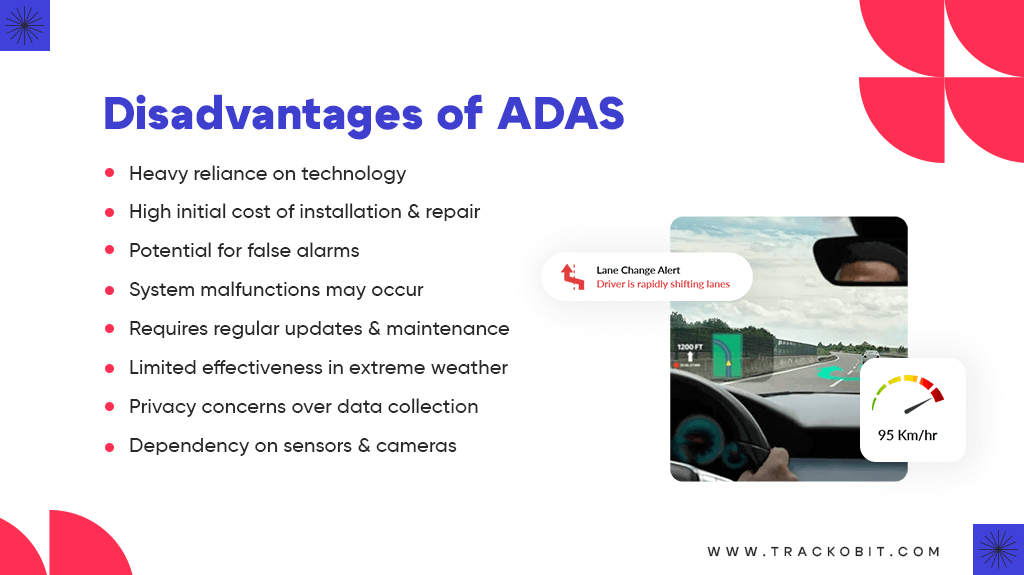-
TrackoBit
Manage commercial vehicles with the new-age Fleet Management Software
TrackoBit -
TrackoField
Streamline your scattered workforce with Field Force Management Software
TrackoField -
Features Resources
-
Blog
Carefully curated articles to update you on industrial trends. -
White Paper
Insightful papers and analysis on essential subject matters. -
Glossary
Explore an alphabetical list of relevant industry terms. -
What’s New
Get TrackoBit & TrackoField monthly updates here. -
Case Study
Explore the cases we solved with our diverse solutions. -
Comparisons
Compare platforms, features, and pricing to find your best fit.
-
About Us
Get to know TrackoBit: our team, ethos, values, and vision. -
Careers
Join the most dynamic cult of coders, creatives and changemakers. -
Tech Support
Learn about our technical support team and services in detail. -
Events
Check out the exhibitions where we left our marks and conquered. -
Contact Us
Connect with us and let us know how we can be of service.
Advantages and Disadvantages of Advanced Driver Assistance Systems
- Author:Nandita Gupta
- Read Time:8 min
- Published:
- Last Update: August 22, 2024
Table of Contents
Toggle
Do you know each year approx. 1.19 million people die due to road crashes? That’s concerning!
Table of Contents
Toggle
As we move towards the future, it’s now possible to narrow down such impending, accidental events by a great number with ADAS technology.
ADAS aka advanced driving assistance system technology is becoming a hit amongst fleet operators because it provides them 360 degree visual monitoring of vehicle’s surroundings. To ensure safe navigation even in tight, compact and fast paced driving surroundings like highways.
The technology is embraced for its promptness in alerting about blind spots, lane changes, collisions, tailgating, and more events which helps drivers proactively escape the dangers. Moreover, it offers an adaptive cruise control that helps maintain optimum driving speed. Most accidents result from abrupt acceleration and overspeeding.
The market is still clouded with the question of whether ADAS are worth getting hands-on or not. Here are the advantages and disadvantages of advanced driver assistance systems ending the debate.
What is ADAS (Advanced Driver Assistance Systems)?
ADAS or advanced driver assistance systems are lifesaving systems that run multiple vision-based algorithms to spot road events that are risky or hard to capture for the human eye. ADAS is a subset of video telematics solutions equipped with high-grade motion-detecting sensors and dash cams that offer a surround view of the vehicle to alert the driver about:
- Blind spots
- Rear and front collisions
- Abrupt lane changing
- Tailgating
- Traffic signage
- Pedestrians around
The ADAS software has automatic emergency braking (AEB) that applies the brakes as per the vehicle’s speed and distance against a slower-moving or stopped vehicle ahead.

Advantages of Advanced Driver-Assistance Systems
One of the greatest advantages of Advanced Driver-Assistance Systems (ADAS) is that it can detect what a human eye might miss. It canspot events or obstacles that are prone to accidents. The system, with its range of advanced and automated features, ensures:
- Heightened vehicle safety
- Driver safety and convenience
- Reduce likelihood of accidents
Let’s explore how ADAS solutions as a subset of video telematics systems aid in increasing safe and autonomous driving experience.
1. Improved Safety of Vehicles
The ADAS software is very smart as it:
- Helps Avoid Collision
ADAS aids with forward and rear collision alerts and presses automatic emergency brakes, forward collision warning, and lane departure warning, which help prevent collisions or reduce their severity.
- Detects Vehicle’s Blind Spots
Blind spots are areas which are hard for drivers to see. The ADAS software system, inclusive of the video telematics system, helps alert drivers about vehicles approaching their blind spots. This is very helpful in preventing accidents which often occur during frequent lane-changing.
2. Improved Visibility During Night Time
ADAS systems incorporate night vision systems, which help enhance visibility during nighttime by highlighting pedestrians or obstacles that are far or not visible even with headlights. Many advanced driver-assistance systems come with a rain-sensing wiper feature, which helps automatically adjust the wiper’s speed in adverse rainy or storming weather conditions.
3. Reduces the Chances of Driver’s Fatigue
Driver fatigue and drowsiness are given in a long haul trip with multi stops. Most ADAS systems are smart at tracking the driver’s pulse rate and head movements and send alerts whenever the driver is identified as drowsy, fatigued, or on the cusp of dozing off.
ADAS solutions also alert drivers in case they unintentionally drift from their lane, helping them steer the vehicle back into the lane.

4. Keeps Drivers Protected and Aware
The ADAS systems host an adaptive cruise control feature that helps maintain an optimum vehicle speed. It helps automatedly adjust speed, accelerate, decelerate, and occasionally stop the vehicle based on the distance to the vehicle ahead to ensure a safe driving distance.
Moreover, the system is so smart that it can even recognize traffic signs that drivers’ eyes might fail to capture. This helps fleet drivers stay informed about crucial information displayed over traffic signage like speed limits, slippery or uneven roads, no u-turns or overtaking, etc.
5. Great Assistance for Parking
ADAS offers advanced parking systems that guide drivers on how to maneuver into tight parking spaces. It offers smart audio or visual warnings of obstacles to ensure safe parking while preventing collisions. Some AI-driven smart ADAS solutions can even auto-manage the steering wheel to park the vehicle. Looks like autonomous driving is prevalent everywhere.
6. Insurance Discounts & Cost Savings
Just to ensure that every vehicle is equipped with advanced driver-assistance system, most insurance companies offer rebates or discounts. It’s like a clever tactic to make fleet operating businesses embrace ADAS technology and ensure safety during the drive.
All in all, drivers benefit from this as they get to enjoy long-term savings on their insurance premiums with added safety and security.
7. Aids in Better Fuel Efficiency
ADAS offers powerful adaptive cruise control, lane-keeping assistance, and predictive braking which reduces fuel consumption. Adaptive cruise control lets drivers automatically adjust the vehicle’s speed based on traffic conditions, and distance from the vehicle ahead. This lets fleet operators make sure that the vehicle is driven at a consistent and efficient driving speed while minimizing sudden acceleration and braking. All in all, it reduces pressure on the engine which yields reduced fuel consumption.
Additionally, ADAS systems, when paired with GPS vehicle tracking systems, get access to advanced navigation systems and route optimization algorithms, which lets drivers travel on shorter, fuel saving routes. The system ensures fleet operators reduce their mileage and minimize fuel usage.
8. Advanced Vehicle-to-Everything (V2X) Communication
ADAS supports Advanced Vehicle-to-Everything (V2X) communication enabling the vehicles to communicate with each other and other infrastructure. Through V2X, drivers can pair their smartphones to their vehicle’s infotainment system and exchange and display real-time data on traffic conditions, road infrastructure, and other possible hazards. All this helps in ensuring timely assistance to drivers which further improves road safety and efficiency.
9. Prevents Risky Driving Events
ADAS technology is built with the purpose to minimise human errors and prevent accidents. It aids drivers with prompt forward collision warning, blind spot detection, and automatic emergency braking, which act as extra eyes and prevent drivers from colliding.
Moreover, it inherits lane-keeping assistance and driver drowsiness detection systems that help you monitor your drivers’ behavior and shoot a warning whenever a driver is found inattentive or fatigued. This helps prevent many close-shave accidents.
The technology, without a doubt, claims to prevent near misses and the occurrence of accidents which further helps minimise property damage and save lives. Moreover, it even offers a pedestrian detection feature where drivers are alerted whenever any pedestrian is approaching their path.

All in all, the purpose of advanced driver-assistance systems is to ensure fleet operators are driving attentively and have clues of external driving events — that can be risky.
Disadvantages of Advanced Driver-assistance Systems
Despite having many benefits, the implementation of the ADAS system is still questionable because of the following challenges or disadvantages looming around.
1. Heavy dependence (resulting in carefree driving)
The level of autonomous driving ADAS solutions offer can make drivers blindly dependent or addicted to the software to do the heavy lifting. This can result in them not (at all) using their gumption, judgment, or reflexes while driving. In short, they might avoid paying more attention to the road and drive more distractedly, which can be detrimental.
2. Malfunctions and Inaccuracies
Where there is technology, there are technical issues! ADAS systems can become faulty, especially in adverse weather conditions, which can disrupt their efficacy. The system may malfunction and end up ringing false alarms or incorrect responses. There, choosing a top-quality ADAS software system is the only escape.
3. High Hardware Costs (not many can bear)
ADAS systems can possess heavy costs that not many fleet operators can bear. The cost of ADAS solutions ranges from a few hundred to several thousand dollars, which can prohibit small-scale fleet managers from opting them, despite their potential safety benefits.
4. Frequent & Costly Maintenance
ADAS software systems made up of mechanical components might require frequent maintenance or repair, which can be more challenging for a non-technical person or a small scale business. Thus, they often require the attention of specialized technicians to fix them, which leads to increased costs and vehicle downtime.
5. Risk of Data Leak
Since ADAS systems collect sensitive data about individual drivers, there’s always a risk of unauthorized access and potential exploitation by malicious parties. It can pose a threat to the driver’s privacy and vehicle control.
6. Missing Common Standardization
Even though ADAS is adept in promoting safe and controlled driving behavior, its implementation is still questionable due to invariable ADAS systems available in the market. Every manufacturer puts forth different ADAS software systems, which further differ in efficacy, quality, and price. As a result, this confuses the buyer as they cannot decipher which one is worth buying. Plus, it leads to inaccuracy and inconsistencies in operations.

Take Control of Your Vehicle’s Safety with TrackoBit’s ADAS Software
When in doubt, choose TrackoBit’s cutting-edge Advanced Driver-Assistance Software. We offer state-of-the-art features that ensure unparalleled safety and control of your fleet operations.
- Gain access to features like real-time collision detection, lane departure warnings, adaptive cruise control, and more — to let your fleet drivers navigate with confidence.
- With advanced sensor fusion technology, our software lets you access precise data to analyse vehicle performance and surrounding environments to optimise future operations.
- With the power of predictive analytics, your drivers get early warnings for potential hazards and optimize response time.
The Silver Lining:
| Complete Asset Safety
Your vehicles, drivers, and consignments are safe as you get alerted for every mishappening before it occurs. |
Better Driver Feedback
Offer your drivers precise and direct feedback with visual evidence of right or wrong driving practices. |
Top-notch Goodwill
Get complete visual and data-led evidence of who was at fault. Keep your operations and goodwill intact. |
Here’s Your Final Takeaway!
ADAS is a much-needed technology that helps ensure safe, autonomous, and controlled driving events. With real-time monitoring and intelligent alerts, it lets drivers behind the wheel stay informed about potential hazards and lets them take proactive measures.
The above-mentioned advantages of ADAS technology outweigh the disadvantages of ADAS technology. Well, ADAS systems are incomplete if they aren’t integrated with the best telematics solutions. It’s about time you join the ranks of savvy fleet operators who trust our video telematics software to navigate every journey efficiently but securely.
Don’t let risks dictate your fleet drivers’ fate! Empower yourself with our ADAS Fleet Management Software Today!
FAQs on Advanced Driver Assistance Software Pros & Cons
-
What is ADAS?
ADAS unfolded as Advanced Driver-Assistance Systems are programs embedded in vehicles to help drivers with safe navigation. It helps drivers have a 360-degree view of their vehicles to spot any anomalies or events that are detrimental. It shoots prompt alerts and warnings before the occurrence of any event.
-
What are the disadvantages of advanced driver-assistance systems?
The biggest disadvantages of ADAS systems are: - It cannot always be fool-proof - Dependency on this system can be addictive, causing drivers to trust it blindly and put their reflexes on the back seat - It is prone to malicious attacks
-
What is the purpose of advanced driver-assistance systems?
The purpose of the ADAS telematics system is to safeguard drivers and their driving events. It notifies drivers and fleet managers about the instances that can be risky and detrimental to health. With features like lane departure warnings, collision alerts, automated braking, and adaptive cruise control — it lets drivers stay on top of safety.
Nandita is the Team Lead for Content Marketing at TrackoBit, bringing over a decade of experience in B2B, B2C, and IoT sectors. She has a proven track record of helping Read More
Related Blogs
-

When Tracking Needs a Clock: Rethinking Fleet Visibility
Tithi Agarwal December 24, 2025Read on to understand why fleet tracking works better when it follows working hours. Because visibility should support operations, not…
-

What Makes TrackoBit’s Video Telematics Software Truly Next-Gen?
Shemanti Ghosh December 17, 2025TrackoBit’s video telematics software blends smart video intelligence with full server control. The result? Superior fleet reliability and safety.
-

Plug, Pair, Perform TrackoBit Introduces BLE Sensor Integration
Tithi Agarwal November 26, 2025TrackoBit’s BLE Sensor Integration enables wireless, real-time monitoring with faster installs and accurate insights. It improves fleet efficiency, visibility, and…
-

How to Use Driver Behavior Reports as a Sales Hook to Close Big Fleets
Tithi Agarwal October 16, 2025TrackoBit’s driver behavior reports empower fleet providers to win big contracts by showcasing safety, efficiency, and measurable ROI.

Subscribe for weekly tips to optimize your fleet’s potential!
Your inbox awaits a welcome email. Stay tuned for the latest blog updates & expert insights.
"While you're here, dive into some more reads or grab quick bites from our social platforms!"Stay Updated on tech, telematics and mobility. Don't miss out on the latest in the industry.
We use cookies to enhance and personalize your browsing experience. By continuing to use our website, you agree to our Privacy Policy.

































